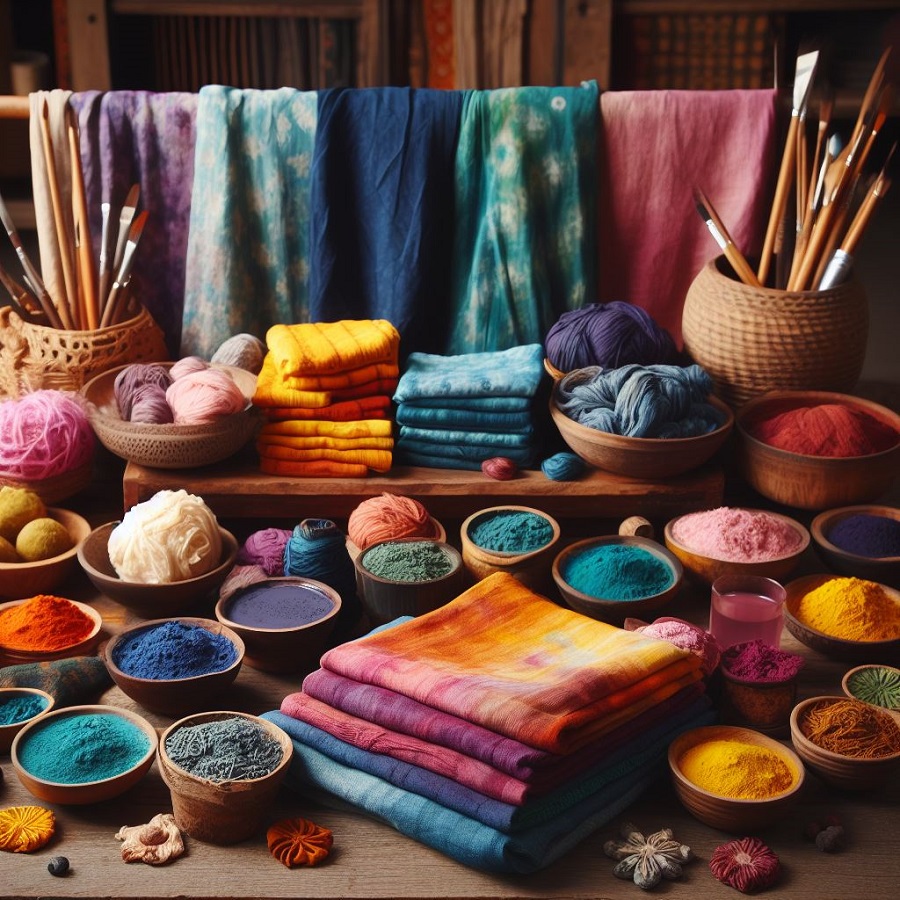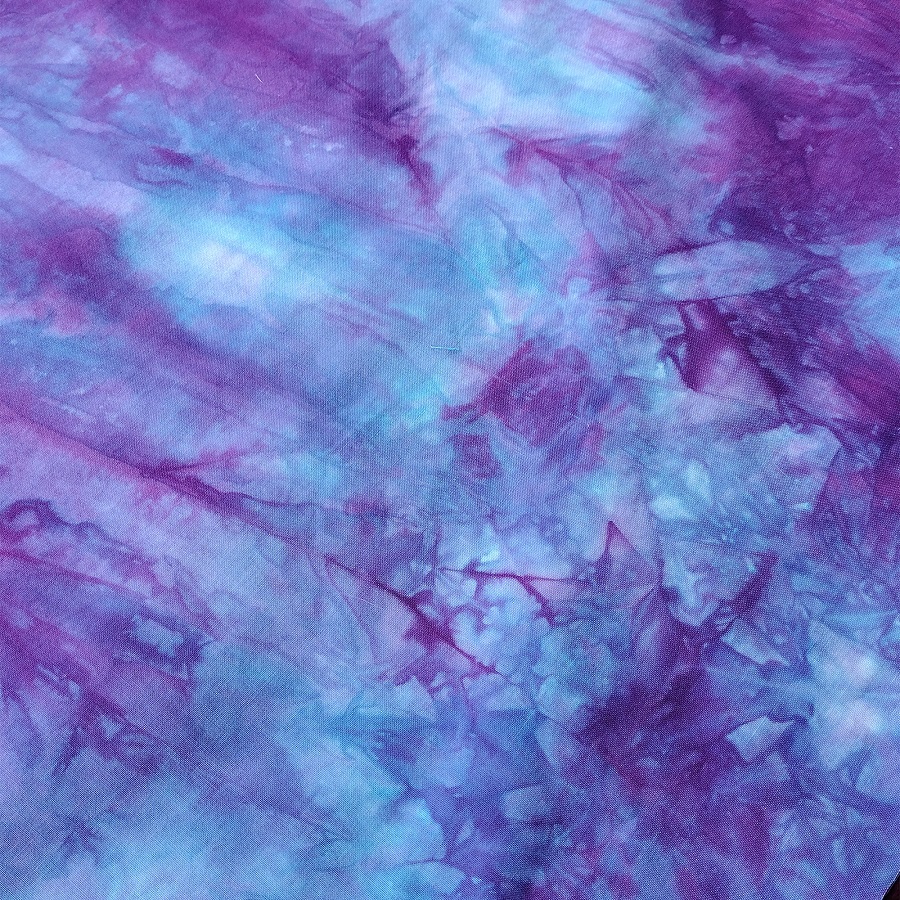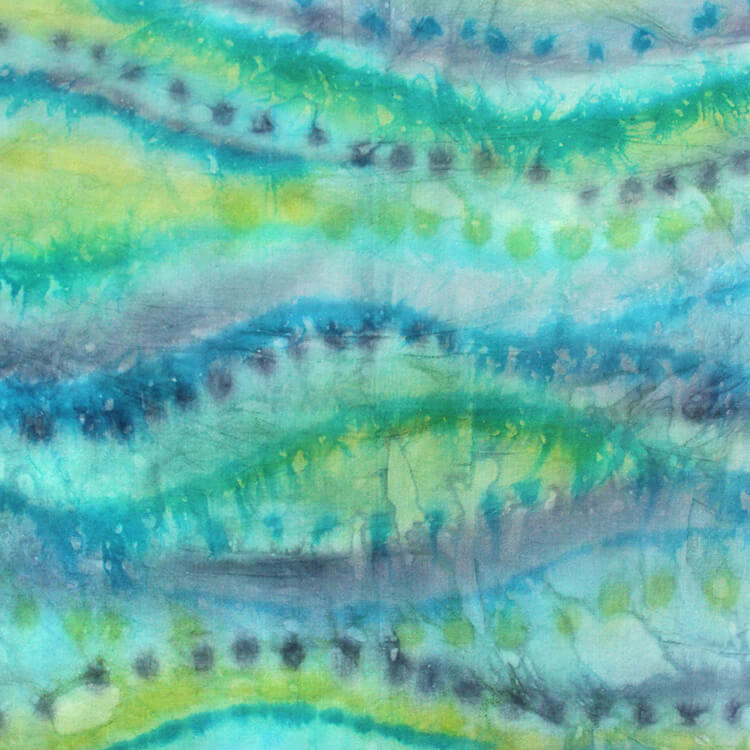Introduction to Fabric Dyeing
Dyeing fabric is a fantastic way to breathe new life into old textiles. It’s a process that transforms the color and can also reflect your personality and style. But, before starting, understanding the basics is crucial. Fabric dyeing is not just about changing colors; it involves prepping, choosing the right dye and fabric, and following specific steps for the best results. When done correctly, it can make your items look brand new.
Selecting the right type of dye and fabric is the first step for successful dyeing. For instance, natural fibers like cotton and wool respond well to dyes, allowing for vibrant and lasting colors. Then, preparing your fabric is equally important. This can include washing and treating the fabric to ensure it absorbs the dye evenly. The dyeing method you choose, whether immersion for a solid color or tie-dye for patterns, will impact the final look.
Following a step-by-step process is important, from mixing the dye to setting it, to achieve the desired shade. Along with the dyeing process, maintaining the vibrancy of the color is essential. Using fixatives like salt or vinegar can help, and proper post-dyeing care will ensure that the colors stay true for a longer time.
Lastly, it is important to dispose of any leftover dye responsibly to avoid environmental harm. Always remember safety measures and protect your workspace from stains. With these points in mind, fabric dyeing can be a fun and creative way to customize your textiles.

Selecting the Right Fabric and Dye Type
Dyeing fabric is exciting and creative. But success starts with choosing the right materials. Begin with natural vs. synthetic fibers. Natural fibers, like cotton, wool, silk, and linen, take dye well. They often result in bright, long-lasting colors. Synthetic fibers, such as polyester and nylon, can be trickier. Some may not absorb dye well, leading to faded or uneven colors.
Natural vs. Synthetic Fibers
When choosing fabric, think about the fiber content. Natural fibers absorb dye easily. This means vivid colors that stick around. Synthetics, however, may require special dyes or techniques. Always check fabric labels before starting. This helps avoid disappointment. For synthetics, look for dyes made specifically for them.
Understanding Dye Compatibility
Different dyes work with different fabrics. Always use the right type for your fabric. There are all-purpose dyes for natural fibers. Then there are acid dyes for protein fibers like wool and silk. For synthetics, there are disperse dyes. Always read dye packaging carefully. It should tell you if it’s a fit for your fabric.
Making the right choices in fabrics and dyes shapes your dyeing success. With the correct pair, you’ll enjoy vibrant and lasting results. Remember to always follow manufacturer’s instructions for the best outcomes.
Preparing Your Fabric for Dyeing
Before you start working with dye, preparing the fabric is key. This helps the dye take evenly and last longer. Here’s how to get your fabric ready for a new look.
Prewashing and Fabric Care
Start with prewashing your fabric. This removes any dirt, oils, or finishes that could block the dye. Use a mild detergent and avoid fabric softeners, as they can affect the dyeing process.
Gathering Necessary Supplies
Next, gather all your supplies. You’ll need:
- The fabric or item you’re dyeing.
- The right type of dye for your fabric.
- Rubber gloves to protect your hands.
- A large bucket or container for the dye bath.
- Hot water, as most dyes work best with it.
- Salt or vinegar, which can be used as fixatives to set the dye.
When everything’s ready, you’re set to move on to choosing your dyeing method. With proper preparation, your dyeing project is more likely to turn out just the way you want it.

Choosing a Dyeing Method
Choosing the right dyeing method is crucial for achieving your desired outcome. Your choice will affect the texture, color depth, and pattern of the fabric. Two popular approaches include immersion dyeing and tie dye.
Immersion Dyeing for Even Coverage
For solid, even color, immersion dyeing is the best method. It involves submerging your fabric in a dye bath. Here are the steps:
- Fill a container with hot water and dissolve the dye.
- Add salt or vinegar, if needed, as a fixative.
- Submerge the fabric completely in the dye bath.
- Stir regularly to ensure even dye distribution.
- Leave the fabric in the dye for the recommended time.
- After dyeing, rinse the fabric until the water runs clear.
With immersion dyeing, remember hotter water tends to work best for vibrant colors.
Creative Patterns with Tie Dye
For unique designs, tie dye is your go-to method. It lets you add spiral, stripes, or splotches of color. Follow these steps for tie dye:
- Bind the fabric using rubber bands to create your pattern.
- Prepare the dye according to instructions.
- Apply dye to the bound areas of the fabric, precisely.
- Wrap the fabric in plastic to keep it damp.
- Let it set for 6-8 hours, or longer for deeper color.
- Unwrap and rinse the fabric until water is clear.
Tie dye offers a fun way to personalize your textiles with vibrant, varied colors.
When choosing your dyeing method, consider the final look you want. Whether it’s the even coverage of immersion dyeing or the playful variety of tie dye, there’s a method that fits your creative vision. Use ‘how to dye fabric’ as your guide, and happy dyeing!
The Dyeing Process
Dyeing fabric yourself might seem daunting, but it’s simpler than it sounds. To start, follow step-by-step instructions to avoid mishaps and get the color you aim for. The process includes mixing dye, the actual dyeing, and allowing the fabric to absorb the color sufficiently. Here’s a more detailed run-through.
Step-by-Step Instructions
- Begin by dissolving the dye in hot water as per package instructions. Use a large bucket or sink to mix.
- Add salt or vinegar, depending on the dye type, to help set the color.
- Immerse your prewashed fabric in the dye bath fully. Make sure no air pockets are trapped.
- Stir the fabric consistently for even dye coverage. It’s crucial for uniform color.
- Allow the fabric to sit in the dye for the duration advised on the dye package.
- Once done, rinse the fabric under running water until it runs clear of excess dye.
- Wash the fabric on its own in the washing machine, preferably on a gentle cycle.
Tips for Achieving Desired Color
For a stronger color, you can leave the fabric in the dye bath for longer than suggested. Be cautious while working with dyes to prevent staining your skin or surroundings. Wear gloves and cover your workspace with plastic or newspapers. If you’re seeking a lighter shade, reduce the time the fabric stays in the dye bath. Remember, dyed fabric usually looks darker when wet and will likely lighten a bit when dry.
Choosing a dyeing method, preparing your materials, and understanding what results you want are the keys to a successful dye job. By following these steps with care and attention, you’ll get the vibrant, refreshed textiles you’re aiming for. Change up tired colors, create something new, or just have fun with the process. The creativity is all in your hands.
Setting and Fixing the Dye
After dyeing your fabric, setting the color is crucial. This step ensures the dye bonds well with the fabric fibers. Without setting, colors may bleed or fade quickly. Let’s look at how to secure your vibrant shades.
The Role of Salt and Vinegar
Salt and vinegar act as fixatives for dyes. They help lock in the color on natural fabrics. When dyeing cotton, linen, or rayon, add salt to the dye bath. For silk or wool, vinegar is better. Mix in one-fourth cup of salt or one cup of vinegar for each gallon of water. It will set your dye and reduce bleeding during washes.
After adding salt or vinegar, submerge the fabric again. Stir gently to make sure all areas soak up the fixative solution. Leave it for about 30 minutes, then rinse well.
Rinsing and Washing Post-Dyeing
Rinsing is next after setting the dye. It removes excess dye that didn’t bond with the fabric. Rinse the fabric in cold water. Continue until the water runs clear of color. This may take a few minutes.
Wash the fabric alone in a washing machine. Use a gentle cycle with mild detergent. This washes out any remaining dye. It also prevents staining other clothes. After washing, dry the fabric as you normally would.
Setting and fixing the dye are keys to long-lasting, vibrant textiles. Use salt or vinegar, rinse thoroughly, and handle your dyed fabric with care. These steps will help you get the most out of your dyeing efforts. Enjoy your beautifully refreshed textiles!

Disposing of Excess Dye Safely
After dyeing your textiles, you’ll often have leftover dye. Handle this carefully to protect the environment. Here’s what to do with the excess dye.
Always pour the leftover dye down the drain, where it can be treated. If you have an outdoor area, avoid pouring dye near plants. Dyes can harm plant life and change soil chemistry. Never dispose of dye where it could enter waterways.
Since most fabric dyes are non-toxic, disposing of them is simple. However, always check the dye label for any specific disposal instructions.
It’s also smart to flush your sink or drain with lots of water. This ensures that any remaining dye doesn’t stay in your pipes. Wear gloves, even during disposal, to keep your hands stain-free.
By following these tips, you can dye fabrics without worry. Safe disposal means you’re looking out for both your textiles and the planet.
Maintaining Dyed Fabrics
After dyeing your fabrics, it’s important to keep the colors bright and lasting. Proper care can prevent fading and maintain the fabric’s look. Here are some key steps to take.
Ensuring Long-Lasting Color
To make sure your dyed fabrics stay vibrant, follow these tips. Wash them in cold water and use a mild detergent. Avoid direct sunlight when drying. Sun can fade colors quickly. If you must use a dryer, choose a low heat setting.
Turn garments inside out before washing. This protects the color. Also, wash dyed items with similar colors. This prevents color transfer.
Avoid chlorine bleach. It can strip the dye from fabrics. Instead, use color-safe bleach if needed.
Ironing can also affect fabric color. Use a low heat setting and iron on the reverse side. This keeps the fabric looking new.
Caring for Dyed Textiles
Caring for dyed textiles is just like caring for any other fabric. But a little extra caution helps. Keep dyed items away from harsh chemicals. These include cleaning products and beauty items like perfume.
Storing dyed textiles right is key. Keep them in a cool, dry place. Avoid plastic bags that trap moisture. This can cause colors to bleed.
With the right care, dyed fabrics can last for years. Treat them gently, wash carefully, and enjoy the renewed look of your textiles.









